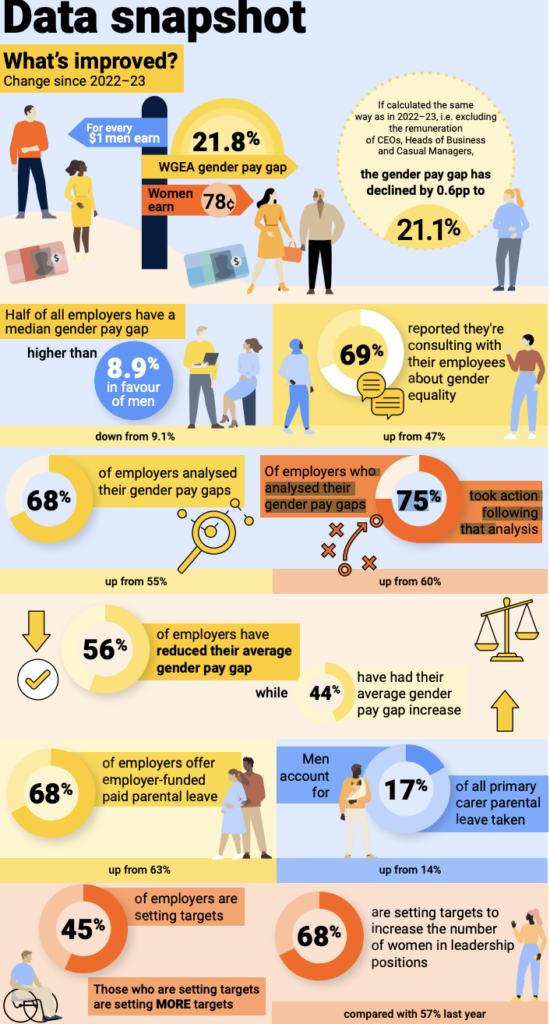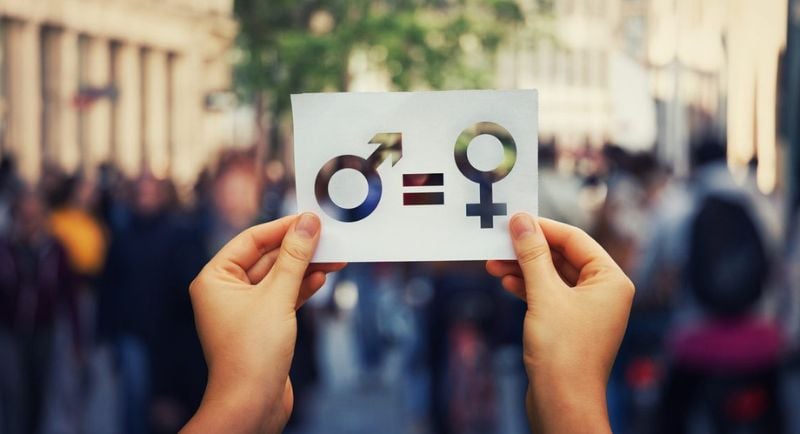The latest results from the Workplace Gender Equality Agency (WGEA) confirm that while progress is being made on gender equality in Australian workplaces, significant work remains to be done.
Released as part of WGEA’s 2023-24 Gender Equality Scorecard, the findings show a 0.6 percentage point reduction in the total gender pay gap, now at 21.8%. This means that, on average, Australian women earn 78 cents for every dollar men earn, equating to an annual income gap of $28,425.
The reduction in the pay gap is largely due to wage increases for low-paid workers, especially in industries like residential aged care, where women make up around 80% of the workforce. For the first time, WGEA’s latest report also includes the remuneration of high-paid executives — CEOs, Heads of Business, and Casual Managers — offering a more accurate and comprehensive measure of gender pay disparities.
A key highlight of the 2023-24 data is the increased focus on gender pay gap analysis among employers. 68% of employers are now conducting this analysis, with 90% of those businesses having done so in the past 12 months. Importantly, 75% of those employers are taking action based on the findings, indicating a positive shift towards addressing gender pay inequality.

The WGEA Gender Equality Scorecard provides an annual update on the state of workplace gender equality in Australia.
WGEA CEO Mary Wooldridge pointed to this growing focus on accountability, stating: “Employers are being held accountable by employees, prospective hires, investors, and the broader community. Business leaders are increasingly challenged to understand and address the drivers behind their gender pay gaps.”
The 2023-24 Gender Equality Scorecard offers insights into the practices of over 7,400 private-sector employers, covering more than 5.17 million Australian workers. The report reflects actions taken by employers ahead of the February 2024 release of official gender pay gap data, which will see employers publicly disclose their gaps for the first time.
While the data shows improvement, Wooldridge cautioned that the persistent gender pay gap continues to affect women’s long-term financial security. She added: “The national results show that, despite positive change, a significant gender pay gap persists. This gap limits women’s lifetime earnings, their ability to save, invest, and build financial security for themselves and their families.”
Employers with 100 or more employees are required to report annually to WGEA against six Gender Equality Indicators (GEIs), which measure critical areas of workplace equality, including pay equity, leadership, and flexible work arrangements.
The full results from the 2023-24 Employer Census, including industry and employer-level data, are available through the WGEA Data Explorer on their website. The employer-specific gender pay gap data will be published in early 2025.
